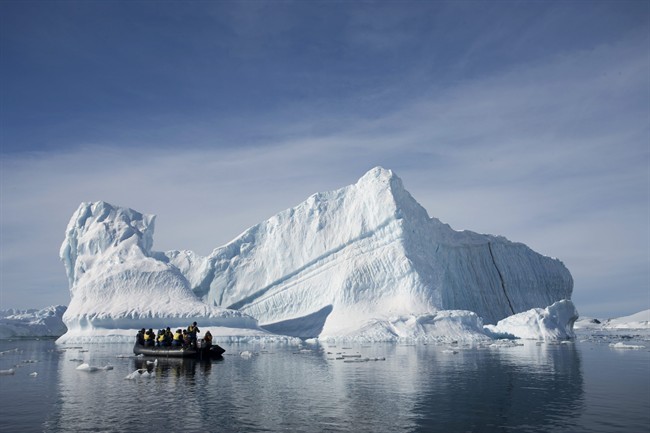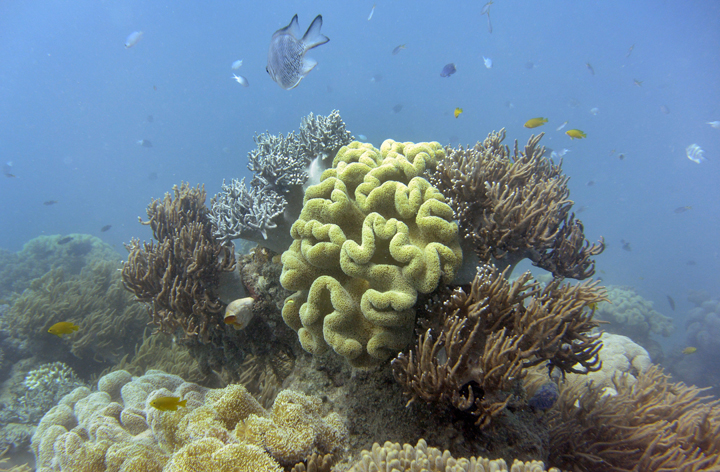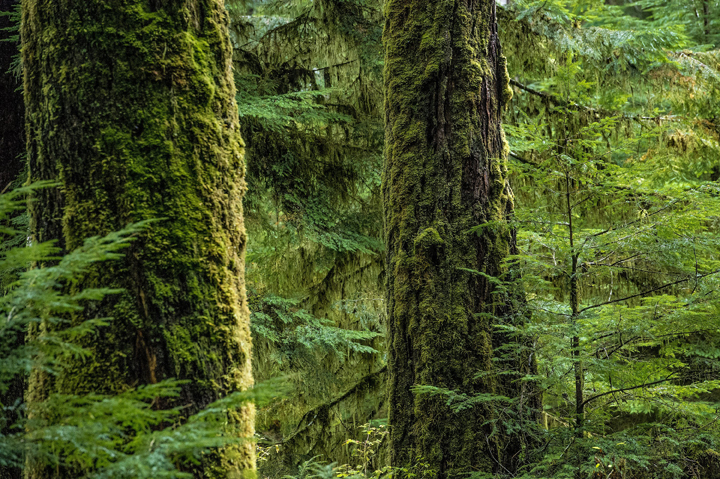WATCH ABOVE: Incredible views of earth from the International Space Station on Earth Day.

TORONTO – Instead of telling you how you can help save the planet (recycle, reuse, don’t drive as much) we’re going to take a look at some cool facts about this unique planet in our solar system. Sure, you know that we’re the only world with intelligent life (as far as we know), but there’s a lot more. Here are just some cool facts about our home.
Largest living structure in the world
Not only is the Great Barrier Reef off the coast of eastern Australia the largest coral reef in the world, but it’s also the largest living organism in the world.
The Great Barrier Reef stretches around 2,300 kilometres and spans about 344,000 square kilometres. It includes about 3,000 coral reefs, 300 coral cays and about 600 continental islands. To put it in perspective, the Great Barrier Reef is about half the size of Texas.
Can’t sit still
Next time someone tells you to sit still, explain to them that it’s impossible.
Not only is Earth constantly rotating close to 1,180 km/h, but it’s also revolving around the sun around 108,000 km/h. All those speeds seem pretty incredible, but there’s more: our solar system is revolving around the galactic core around 800,000 km/h.
READ MORE: Harper’s North Pole bid surprised government officials, internal emails suggest
A world of extremes
The hottest temperature ever recorded on Earth was in the aptly named Furnace Creek Ranch in California, which recorded a blistering high of 56.7 C. There was a time when the record belonged to El Azizia, Libya, with a recorded temperature of 58 C. But according to the World Meteorological Organization, there were problems with the way the data was collected and they have since rejected that recording.
The lowest temperature ever recorded was in Vostok, Antarctica, where it was an icy -89.2 C. However, recent analysis of satellite data suggests that the coldest temperature on our planet occurred in August 2010 when it was -94.7 C.
Frozen freshwater
About 99 per cent of Earth’s freshwater is in ice in Greenland and Antarctica. The Antarctic Ice Sheet measures almost 14 million square kilometres and has about 30 million cubic kilometres of ice.

If the entire Antarctic Ice Sheet melted, our oceans would rise by about 60 metres.
Rainforests: Rare but essential
Though rainforests only cover about two per cent of Earth, it’s believed that they account for about 50 per cent of the Earth’s plants and animals.
British Columbia is home to the Great Bear Rainforest, which stretches more than 250 miles along the province’s coast with a total of 21 million acres. It is part of a larger rainforest that stretches from California to B.C.
The gravity of the situation
You are constantly falling into Earth. It’s true: due to the mass of Earth, you are being pulled down, on average, at a rate of 9.8 metres per second squared.
Gravity — on anything — has to do with mass. The more mass something has, the more gravity it exerts on things around it.
Now, depending on where you’re standing, gravity on Earth is different. Gravity decreases the further away you are from the centre of Earth. So, say you’re on top of a mountain, gravity won’t be as strong (though you certainly won’t notice it).
But then there’s the fact that Earth is rotating and trying to fly you off into space. So gravity also changes depending on where you’re standing. If you’re at the equator, for example, gravity is about 9.789 metres per second squared, while at the poles (where you’re not spinning as widely), it’s 9.832 metres per second squared.
Restless poles
The planet’s magnetic poles are always on the move. Most recently the European Space Agency’s SWARM mission found that the north magnetic pole is moving from its current location off the coast of Ellesmere Island in Nunavut toward Siberia. It’s believed that it moves, on average, about 10 km a year. At this rate it will be in Siberia in 50 years. The southern pole is also moving, but at a slower rate.
The magnetic poles move due to several influences: currents in Earth’s core as well as in the ionosphere, as well as the planet’s magnetosphere.
Eventually, the poles will flip. This isn’t something new — scientists believe that, on average, the poles flip every 200,000 to 300,000 years, taking hundreds or thousands of years to do so.
Most active volcano
There is debate about which volcano is the most active on Earth. Is it Mount Kilauea in Hawaii? Mount Etna in Italy?
The answer, according to the U.S. Geological Survey, is actually Mount Stromboli. This volcano, off the west coast of Italy, has an impressive record: it’s been erupting continuously for 2,000 years.
Oceans: The final frontier
When you think of the “final frontier,” it’s likely that you’re imaging space, with it’s unending expanse of the unknown. But the fact is you don’t need to travel very far to explore the unknown.
To date, less than five per cent of our oceans have been explored. It seems rather preposterous when you think that more than 70 per cent of our planet is covered in water.
Space dust keeps fallin’ on your head
There’s a lot of leftover debris in our solar system. And as Earth hurtles through space, a lot of it enters our atmosphere. Some of the larger pieces we see as meteors. But the teeny, tiny stuff goes unnoticed. And it turns out there’s a lot of it. While estimates vary, scientists believe anywhere from 10 to 100 tons of space dust rains down on us every day.





Comments